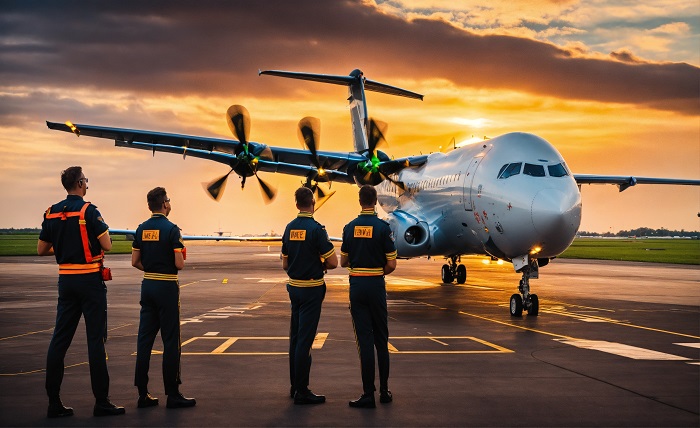If you operate or own an aircraft in South Australia, understanding your insurance coverage is not just a regulatory necessity—it’s a business-critical safeguard. Whether you’re flying for recreation, charter, agriculture, or commercial purposes, aircraft insurance in Adelaide must be tailored to your specific operations, risks, and regulatory requirements.
But what exactly does a typical aircraft insurance policy include?
According to David Woollams, of AGL Aviation Insurance Brokers,
“Many aircraft owners believe they’re fully covered, only to discover key exclusions or insufficient coverage when it matters most. Aircraft insurance isn’t just paperwork—it’s a detailed risk strategy.”
Let’s break down the main components of a standard policy, what they actually protect, and what to watch for.
1. Hull Insurance (Aircraft Physical Damage)
This is the core of any aviation insurance policy. Hull insurance covers physical damage to the aircraft itself, whether from a collision, runway excursion, hangar incident, or other covered perils.
Types of hull coverage:
- Ground Only: Covers damage when the aircraft is not in motion.
- Ground and Taxi: Covers damage during taxiing (not including flight).
- All Risks (Not in Motion & In Flight): Comprehensive coverage from hangar to sky.
“All-risks hull coverage is what most owners opt for, but it’s essential to read the fine print,” Woollams says. “Some policies exclude gear-up landings or bird strikes unless explicitly stated.”
Hull coverage is typically valued based on the aircraft’s agreed value rather than market value, which helps avoid disputes at claim time.
2. Liability Insurance
Just as in auto insurance, liability coverage protects you from the cost of bodily injury or property damage to third parties.
Two common types:
- Passenger Liability: Covers injury or death of passengers on board.
- Third-Party Liability: Covers damage or injury caused to people or property outside the aircraft.
Standard coverage limits vary significantly depending on use. For example:
- A private Cessna may carry $1–2 million in liability
- A charter aircraft might require $10 million or more
3. Passenger Liability (Optional or Combined)
Some policies combine this with third-party liability, while others offer it as an add-on.
Passenger liability:
- Applies only to people on board
- Often has per-seat limits (e.g. $250,000 per passenger)
- Can be required for commercial certification or charter operations
4. Medical Payments Coverage
This provides limited, no-fault medical coverage for passengers or crew injured during an accident. It’s designed to cover:
- Immediate medical expenses
- Ambulance fees
- Hospital transport
It doesn’t replace liability coverage, but it can provide fast relief while larger claims are settled.
5. In-Flight Equipment & Modifications
Modern aircraft often have high-tech avionics, GPS units, and specialized onboard equipment. These may not be automatically included in hull coverage.
Ensure your policy accounts for:
- Aftermarket avionics
- Cargo modifications
- Spraying systems (for agricultural aircraft)
- Cameras and sensors (for survey aircraft)
Woollams adds:
“If you’ve upgraded your panel or installed mission-specific equipment, your broker should know. Leaving it unlisted could lead to serious underinsurance.”
6. Hangarkeepers or Premises Liability (For Operators & Owners)
If you own or operate a hangar, your exposure extends beyond flight.
Hangarkeepers coverage includes:
- Liability for aircraft stored in your care
- Damage to third-party aircraft on your premises
- Slip-and-fall or property damage claims from visitors
This is especially important for charter operators, FBOs, or maintenance facilities.
7. Loss of Use & Business Interruption (Optional)
If your aircraft is grounded due to an accident or damage, the financial fallout can be severe—especially for commercial operators.
Optional add-ons include:
- Loss of Use: Reimburses lost income while the aircraft is under repair
- Replacement Rental: Covers cost of a temporary aircraft to continue operations
“These policies aren’t cheap, but for commercial operators, they pay for themselves with one grounded week,” says Woollams.
8. War, Hijacking & Terrorism Coverage
Often excluded from standard policies, coverage for:
- War risks
- Terrorism-related incidents
- Hijacking or unlawful seizure
…is typically added separately. While rare in general aviation, it’s relevant for aircraft flying internationally or operating in certain airspaces.
9. Pilot Warranty & Usage Clause
A crucial section in every policy is the pilot clause, which outlines:
- Who is approved to operate the aircraft
- Required flight hours and certifications
- Exclusions for certain types of operations (e.g. aerobatics, agricultural spraying)
Woollams emphasizes:
“The most common claims issue we see is a breach of pilot warranty. If someone flies outside their approved use or doesn’t meet hour requirements, the claim could be denied. That’s why accurate disclosure is key.”
10. Exclusions to Watch For
Every aircraft policy will contain exclusions—some obvious, others more subtle. Common ones include:
- Wear and tear or mechanical breakdown
- Illegal operations or flying without a license
- Damage from war or nuclear events (unless covered separately)
- Use of the aircraft outside the geographic coverage area
Knowing these ahead of time can help you avoid costly surprises.
How to Tailor Your Policy
No two aircraft are alike—and neither are two aircraft owners. Your insurance should reflect:
- Aircraft type and use (private, charter, ag, training)
- Pilot experience levels
- Number of passengers
- Location and hangar status
- Operational range (domestic vs. international)
Working with a broker who understands aviation—especially one familiar with aircraft insurance in Adelaide—can make all the difference.
Final Thoughts
A typical aircraft insurance policy can cover everything from physical damage and liability to optional protections like war risk and loss of income—but the devil is in the details.
Whether you’re flying over the Adelaide Hills or preparing for cross-country trips, a well-structured aviation policy ensures your aircraft—and your finances—are protected from takeoff to touchdown.
